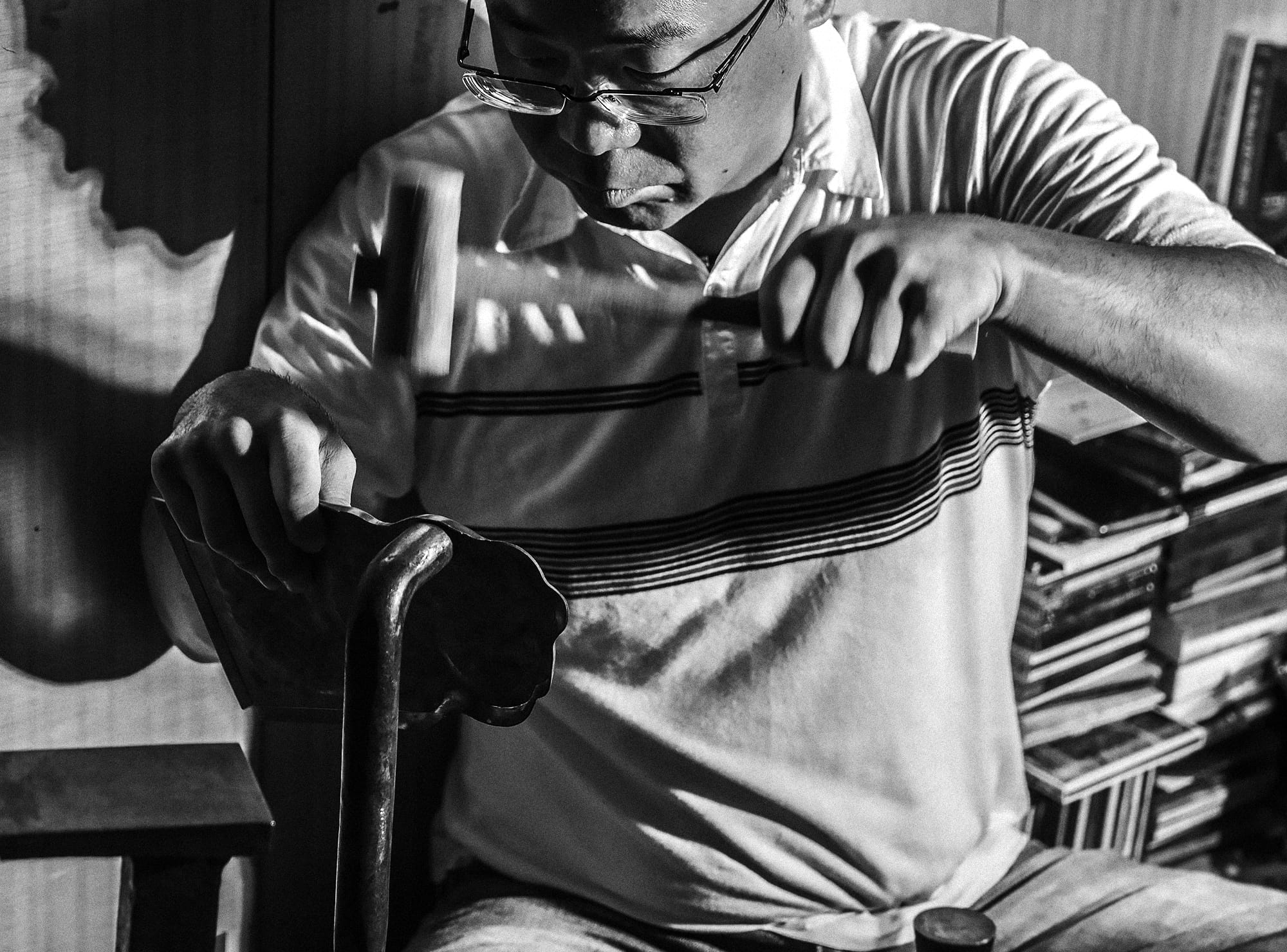Kazarikanagu-shi, decorative metalsmith, is an artisan who makes metal fittings that can be seen throughout their products. They make excellent products such as large items for the roof gables of temples, the Buddhist altars, the legs of Buddhist altar fittings, footings, and sliding door handles, which are both practical and decorative.
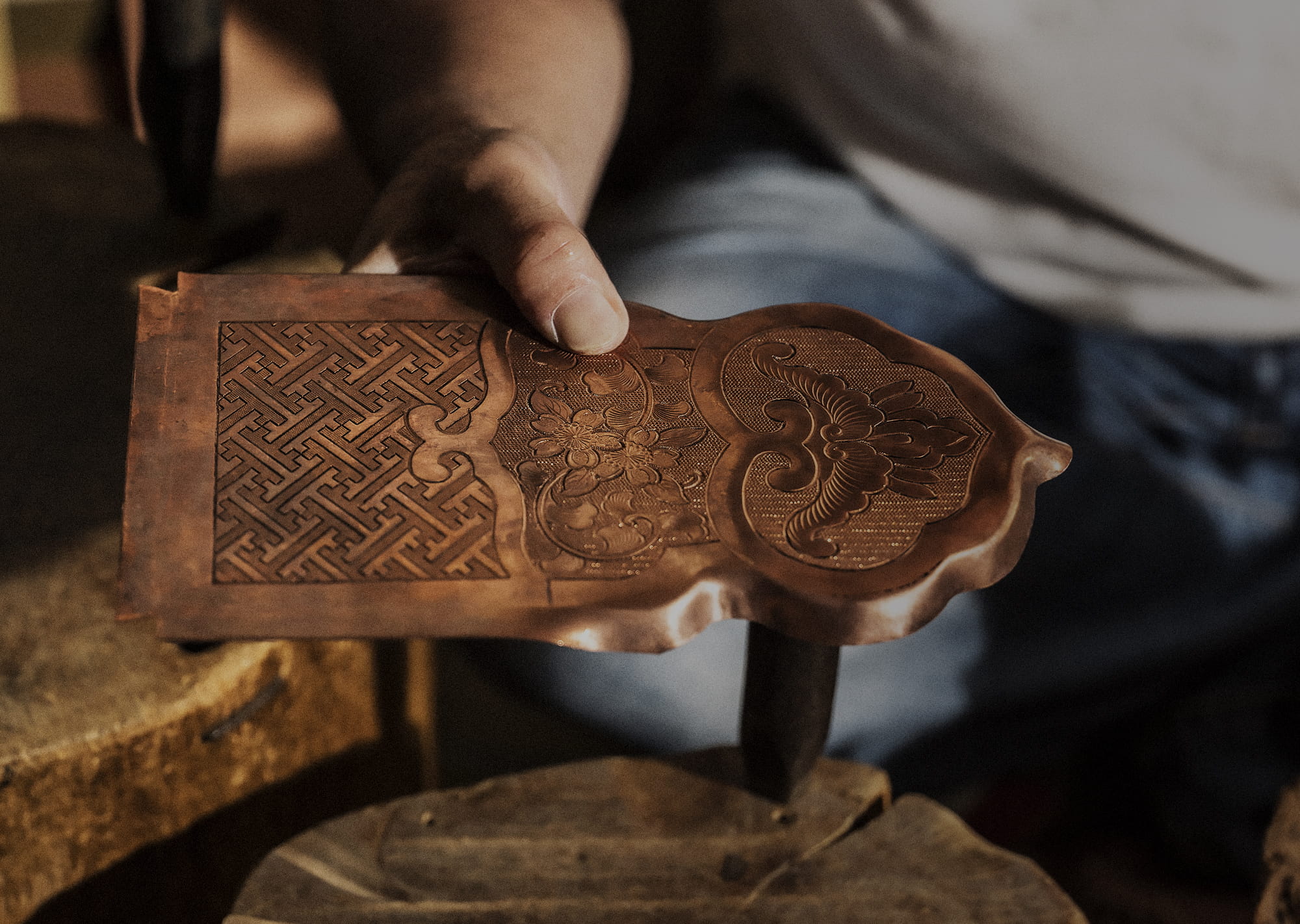
Decorative Metalsmith
Kazarikanagu-shi
Work of kazarikanagu-shi, decorative metalsmith
The fusion between utility and decorative art
- Introduction
-
List of Artisans
- Altar Hall Specialist(Kuden-shi)
- Woodworking Craftsman(Kiji-shi)
- Woodcarver(Hori-shi)
- Urushi Lacquer Painter(Nu-shi)
- Roiro Finish Polisher(Roiro-shi)
- Gold Leaf Craftsmen(Hakuoshi-shi)
- Colorist(Saishiki-shi)
- Makie Master(Makie-shi)
- Buddhist Sculptor(Bus-shi)
- Kirikane Gold Cutter(Kirikane-shi)
- Decorative Metalsmith(Kazarikanagu-shi)
- Gold Engraver(Chokin-shi)
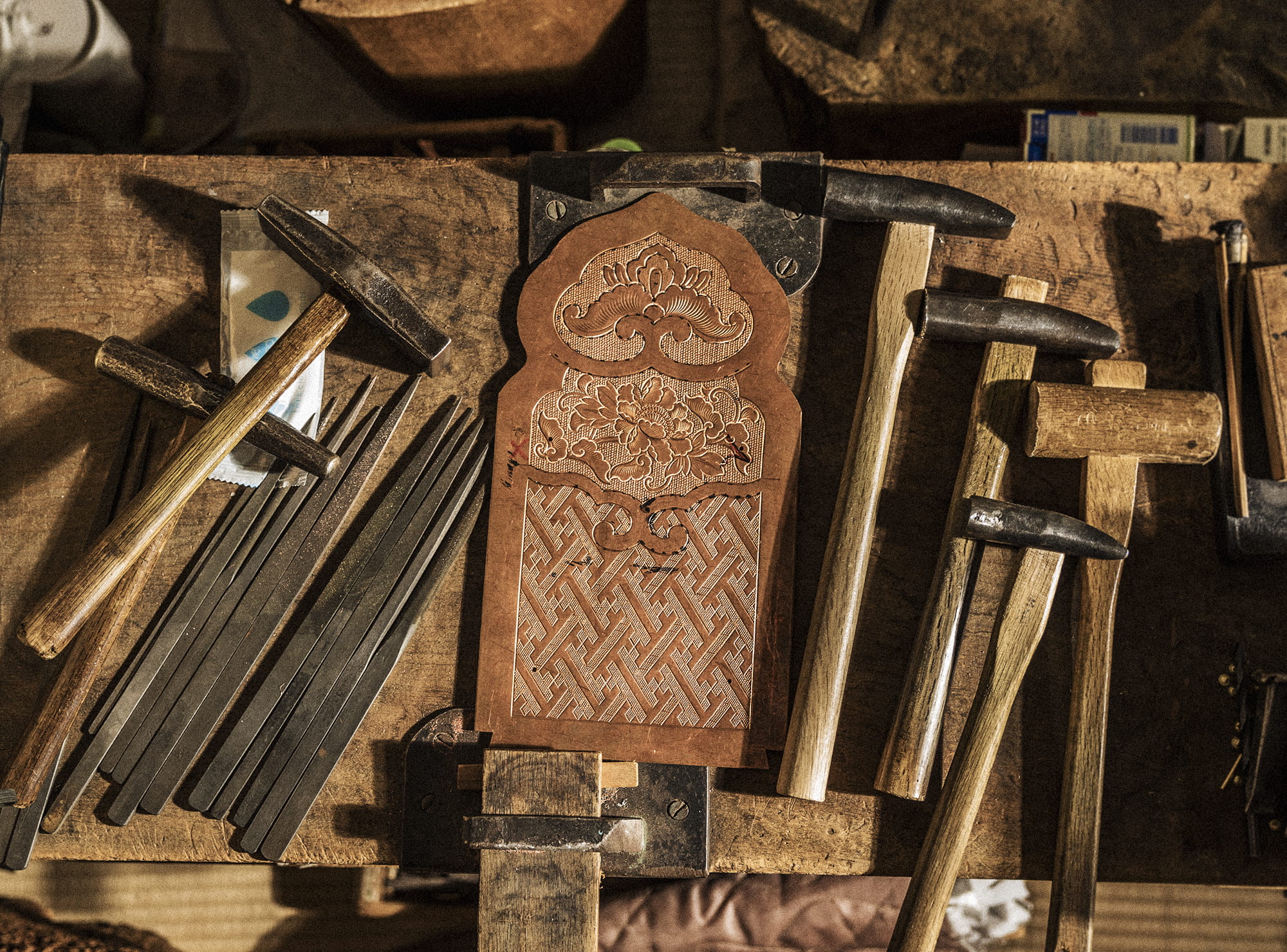
Japanese aesthetics
Making huge gold metal ornaments like the gable roof of a temple is the work of a decorative metalsmith. When you enter a temple or historical building, you'll find gold metal fixtures on a pillar, wall surface, fusuma sliding door handles, and edges of furnishings.
Japanese traditional technique is rarely used solely for decorations. It is also applied for practical uses such as making products last longer, stabilizing forms, increasing strength, or hiding joints. Since products are to be seen by the public, fittings and finishings are made to look beautiful and dignified, in line with the principles of Japanese aesthetics. Similarly, Samurai warriors applied the greatest amount of decoration on the sword's tsuba, a hand guard piece that was intended for practical use.
Decorative metal fittings possess both practicality and decorativeness, and play an important role in making these seemingly contradicting qualities coexist. In some places, metal fittings that could have been concealed are instead applied on the surface in order to show their beautiful decorative qualities. A decorative metalsmith is a significant clamp in the world of architecture and craft in Japan.
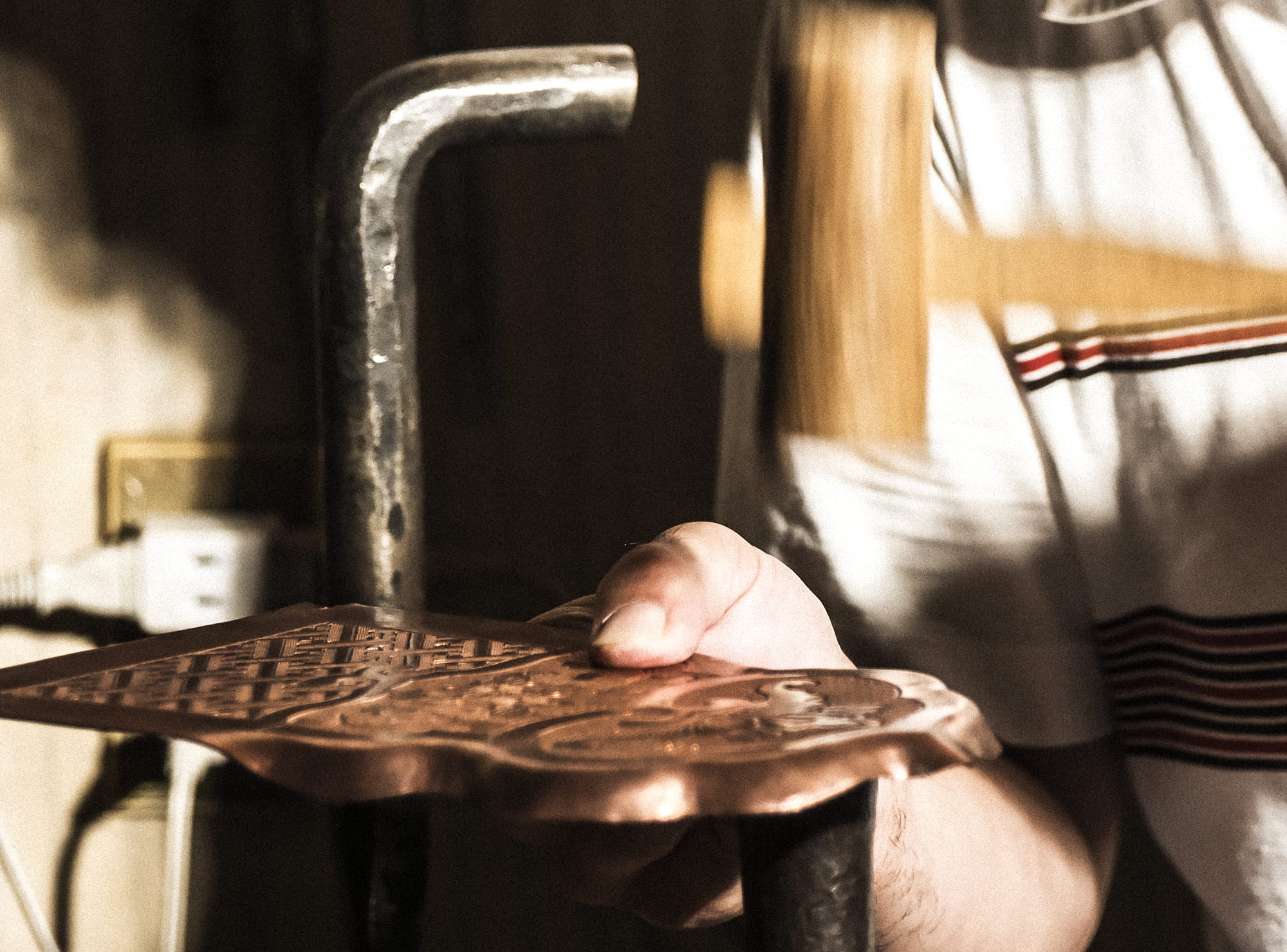
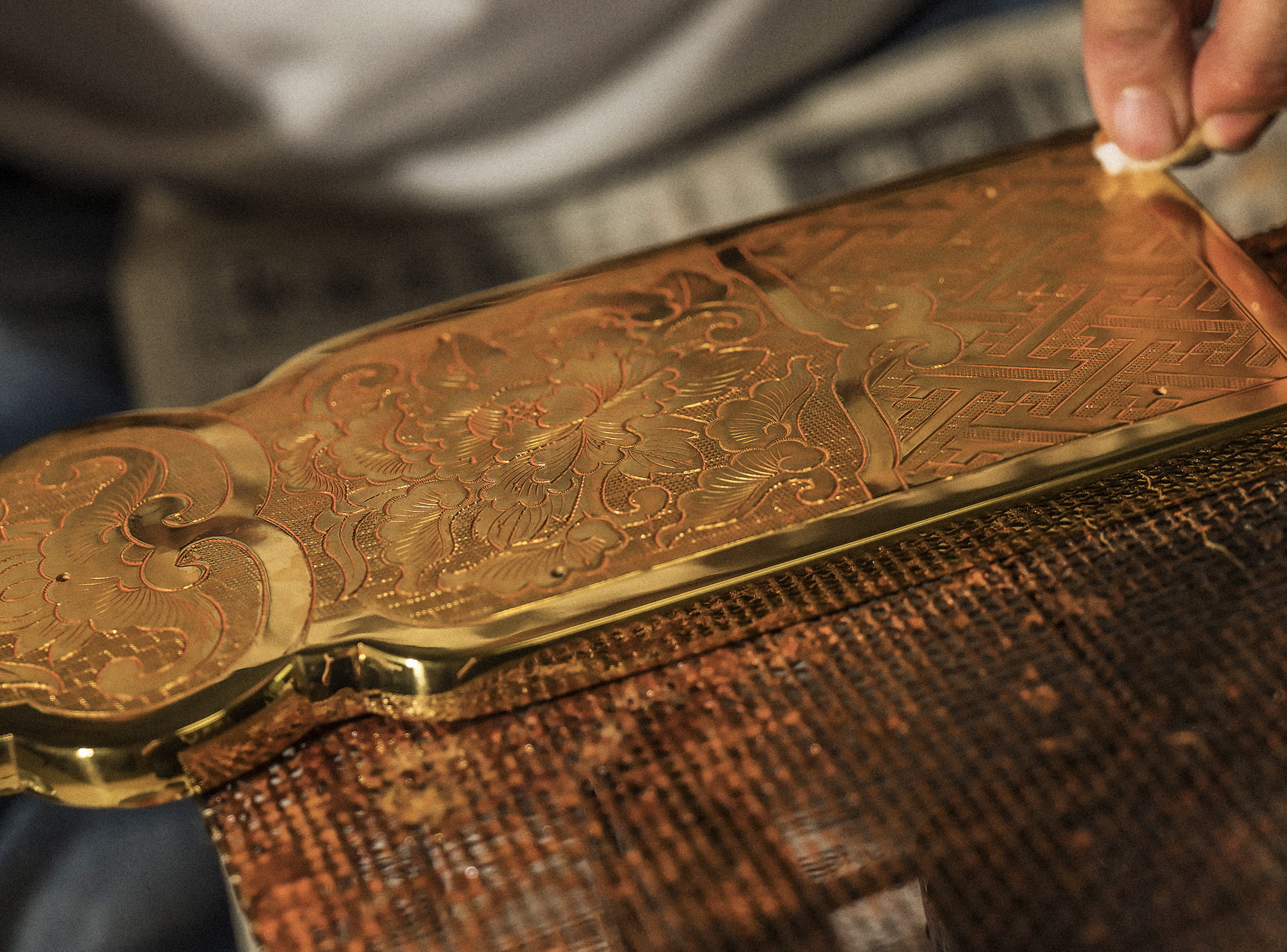
Division of labor and specialization
The wide variety of Kyoto artisan's work and the fact that Japanese crafts are based on the division of labor between numerous artisans can be understood by the number of different artisans required to complete each piece of Buddhist equipment or household Buddhist altars.
However, there is more to the divisions of labor in Kyoto and a decorative metalsmith is someone who supervises and manages them.
The work of a decorative metalsmith is to cut copper or brass plates to fit in a product and create the overall shape. The product is passed on to a gold engraver who carves designs on the metal fittings. After this decoration, the product is passed to a plating artisan. Then the product makes its way back to the decorative metalsmith, where they execute a process called iroage, which makes the carved designs and patterns stand out for a more beautiful appearance in the end.
Each artisan engages in their own specialization of decorative metal fittings, which is only one part of the product, yet they make a craftwork of unprecedented high quality.
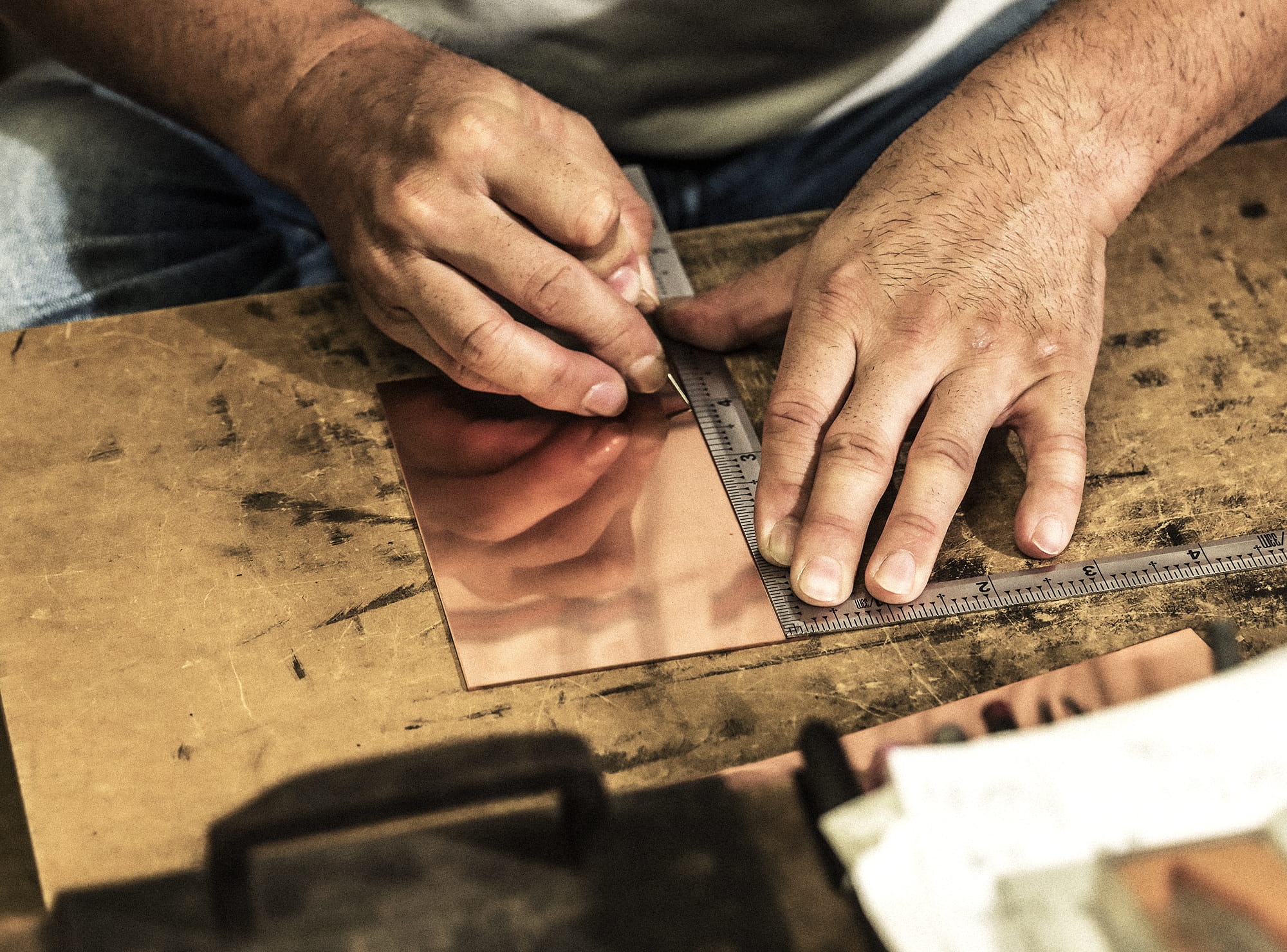
Potential of copper plates
One of the most amazing processes in decorative metal fitting is the dramatic difference between raw materials and finished products. Copper plates are like thin ten-yen coins which are nondescript, brown, ordinary plate.
However, in the eyes of the decorative metal fitter, the finished product is certainly in sight. When it's cut out, heated, curved, and hammered during the process, they know how much the copper plate will expand and contract.
As they are familiar with the numerous processes that a copper plate goes through and its influences on the material, having a thorough knowledge of these particularities is the true worth of a decorative metal fitter.
Copper is a very soft material. If you bend or beat it, it easily expands. Therefore, if the size of the finished product is not as per the drawings, the size of the finished product will change during these processes. Decorative Metalsmiths form the base of the copper plate by deciphering the three-dimensional shape from the drawing and taking into account the work of the subsequent artisans who will also take part in the division of work. Plain copper plates are carried out of the studio and return as glowing gold art pieces that are beautifully decorated with patterns.
In the end, the product is finished with a beautiful iroage coloring on the surface and shipped off in a brilliant display of beauty.
